 |
 |
 |
| |
aHSIL and Nadir CD4s Below 200 Boost Invasive Anal Cancer Risk With HIV
|
| |
| |
CROI 2024 (Conference on Retroviruses and Opportunistic Infections), March 3-6, 2024, Denver
Mark Mascolini
Anal high-grade squamous intraepithelial lesions (aHSIL) and nadir CD4 count below 200 each independently boosted risk of invasive anal cancer in 4105 people with HIV screened for anal cancer [1]. Screening found 33 people with invasive anal cancer, 7 of whom (21%) died during follow-up, all with stage IIIA or worse cancer.
To inform shared decision making about anal cancer screening, Edward Cachay and University of California, San Diego (UCSD) colleagues created a longitudinal cytology-based inception cohort of anal cancer screening as part of routine care for people with HIV infection. Screening started with a digital rectal exam and anal cytology (cell studies). If the rectal exam was abnormal or cytology showed atypical squamous cells of undetermined significance (ASCUS) or a worse stage, clinicians recommended high-resolution anoscopy. They offered ablative therapy to participants diagnosed with aHSIL.
People were eligible for the inception cohort if they were at least 18 years old and had 2 or more anal cytology exams. The UCSD team analyzed the cohort from November 30, 2006 to March 3, 2021, leaving time for at least 2 years of follow-up after the last screening visit. When searching for predictors of invasive anal cancer, they used inverse probability weighting to account for varying screening rates in different sociodemographic and risk groups.
Among 8139 people with HIV eligible for screening, 4105 got screened, of whom 22% had aHSIL (12% on baseline cytology, 10% on follow-up cytology). Thirty-three people had invasive anal cancer, of whom 7 died during follow-up (mortality 21%). Unadjusted 5- and 10-year risk of invasive anal cancer measured 0.63% and 0.80%. When considering nadir CD4 count below 200 and initial aHSIL cytology, 5- and 10-year risk came to 2.75% and 3.42.%. And when considering nadir CD4 count below 200 and time-updated aHSIL, 5- and 10-year of invasive anal cancer were 3.40% and 4.27%.
Inverse probability weighted Cox modeling identified only 2 independent predictors of invasive anal cancer: time-updated aHSIL boosted risk about 4.5-fold (adjusted hazard ratio [aHR] 4.54, 95% confidence interval (CI) 2.19 to 9.43, P < 0.001), and nadir (lowest-ever) CD4 count below 200 tripled the risk (aHR 2.99, 95% CI 1.35 to 6.62, P < 0.0001). Together, time-updated aHSIL cytology and nadir CD4s below 200 made invasive anal cancer 13 times more likely (aHR 13.03, 95% CI 4.78 to 35.38, P = 0.00).
People in this cohort got diagnosed with invasive anal cancer at a median age of 50, a median 830 days after their first cytology. Twenty-three of 33 people diagnosed with invasive anal cancer (70%) declined high-resolution anoscopy, including 8 who decided against secondary high-resolution anoscopy surveillance.
All 7 people who died of invasive anal cancer had clinical stage IIIA or higher anal cancer. Cachay and coworkers stressed that this finding underscores the importance of anal cancer screening and diagnosis in HIV.
Reference
1. Cachay E, Gilbert T, Qin H, Mathews C. Clinical predictors and outcomes of anal cancer for people with HIV in an inception cohort. CROI 2024 (Conference on Retroviruses and Opportunistic Infections), March 3-6, 2024, Denver. Abstract 759.
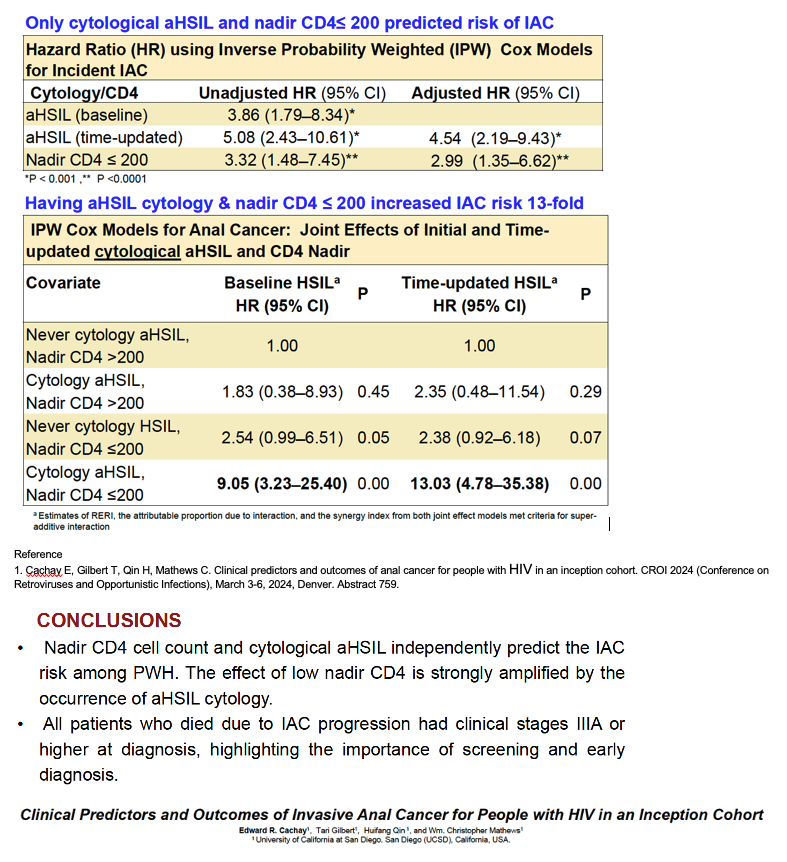
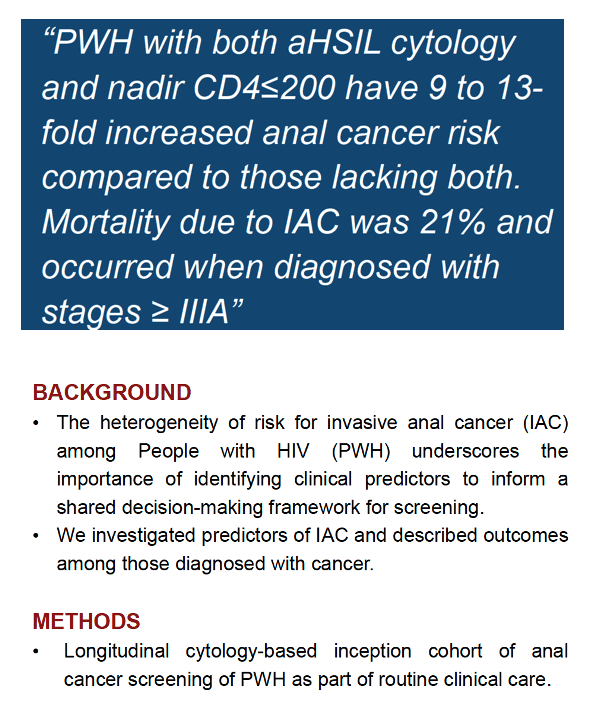
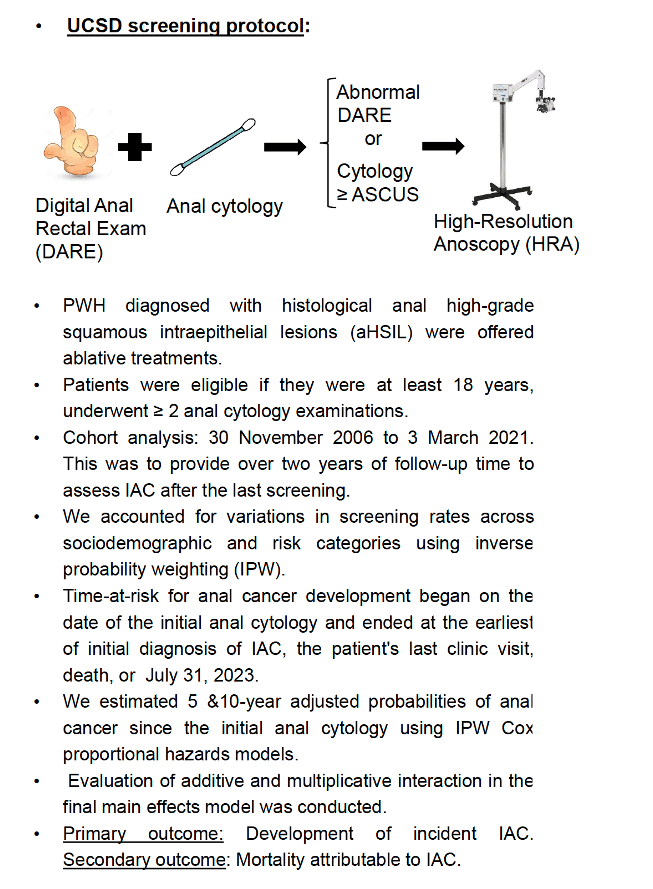
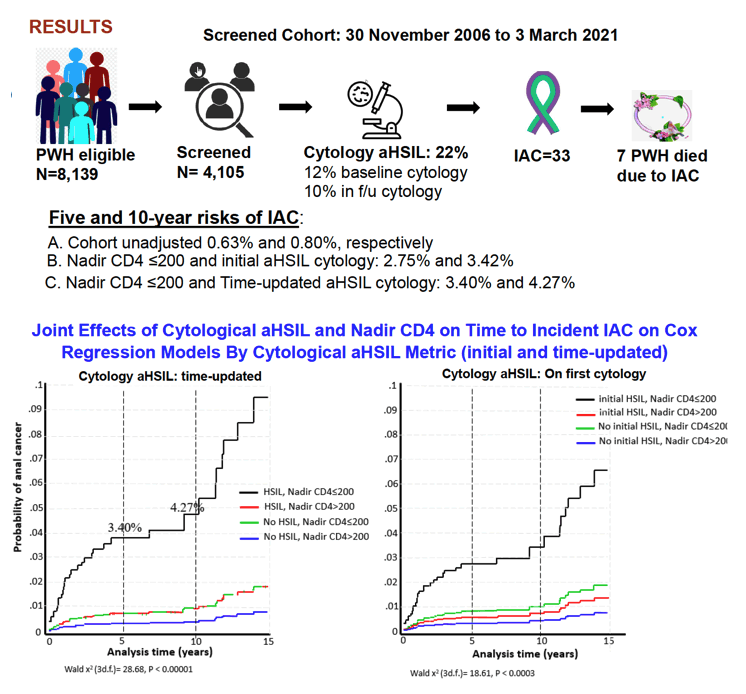
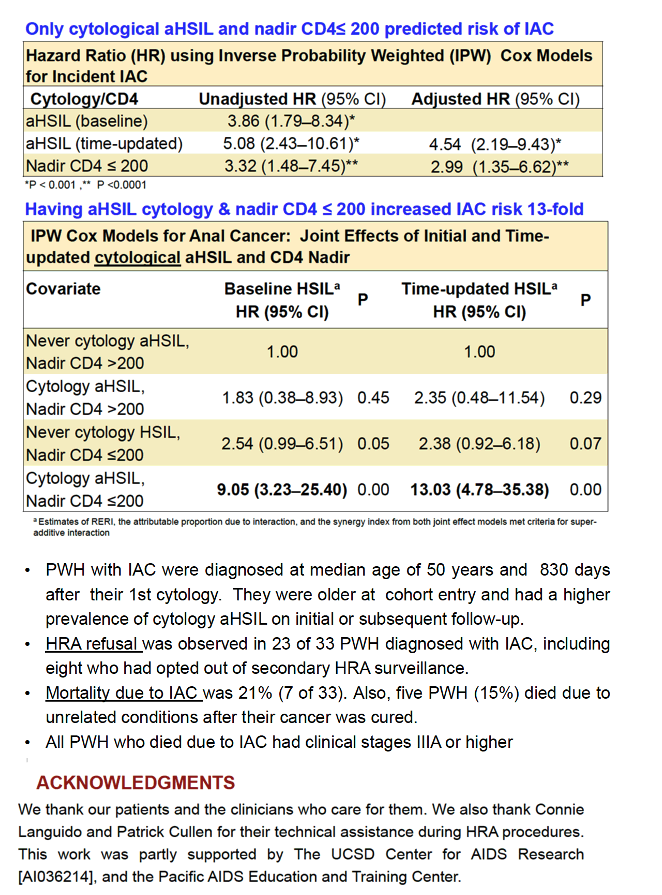
|
| |
|
 |
 |
|
|